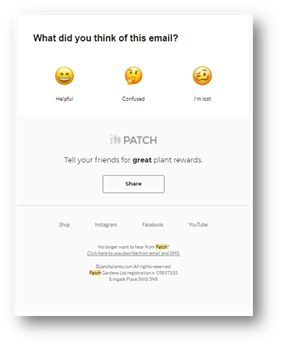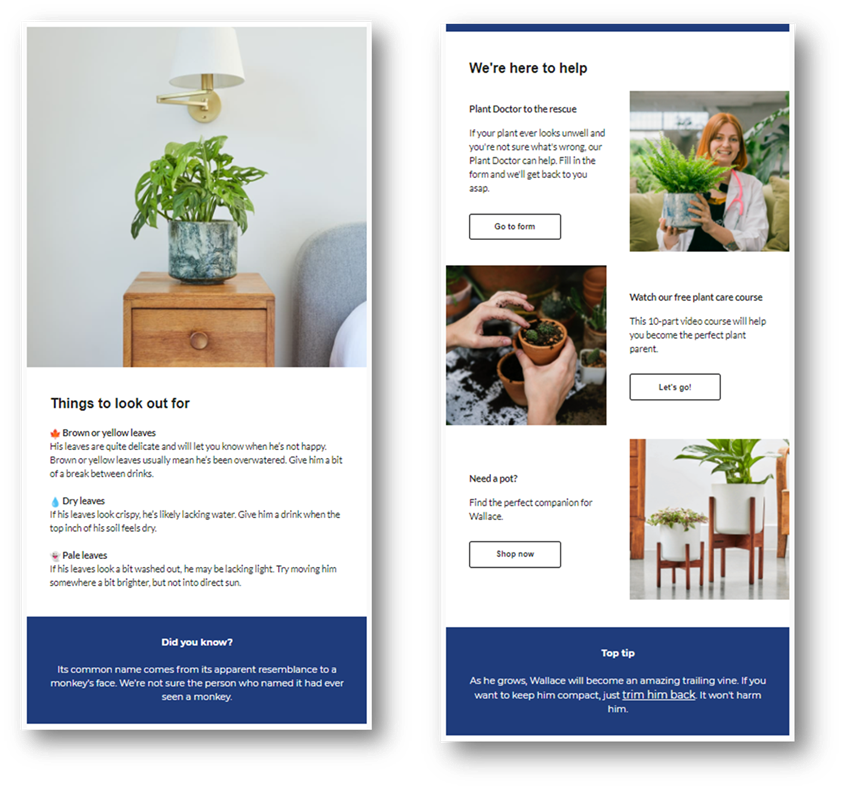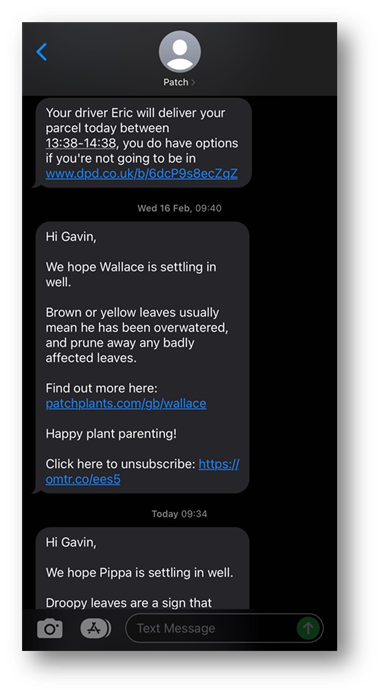Nailing cross-channel marketing. Email how it was intended to be.
I've been working in email for 18 years now, and I love it. It's allowed me to travel the world, speak on stage, work with some incredible clients, and most importantly, meet so many beautiful people. But, I have to say I'm not a fan of that; I can’t look at an email without breaking it down and analyzing it. Not sure if I'm alone on that one.
But, what I see when I'm analyzing every email that lands in my inbox are some sterling examples of what emails can be to our audiences. And that above all should be useful. So, if you don't see what use this email will be to a recipient before you hit the send button, you should think again.
Let's set the scene. Besides being a total email geek, I am somewhat an amateur horticulturist. My home is full of plants, little ones, big ones, unusual ones, and stubborn ones. Buying plants is one thing. Looking after them, however, is another story. Those stubborn plants I just mentioned can sometimes be the bane of my life. "Why are your leaves brown?!" "what more do you want from me?!" That is what you can often hear me shouting at them. So when a company gives me the necessary tools to look after my little green babies, I'm entirely on board with them.
I recently bought a couple of plants from Patch, Wallace the mini cheese plant, and Pippa the peace Lily. Following my purchase, the emails and comms I received from Patch Plants have been fantastic. For me, they tick four essential boxes when it comes to doing email right:
- They have a clean and engaging design
- They're useful
- They're timely
- They don't rely on just email alone.
Before I go into my analysis, I have to point out that Patch plants are not a client of mine, nor do I know the good people behind their email program. I'm just a fan of good emails and content. And for me, they have this in spades (geddit?).
Clean design
With that said, let's start with design. I'm no designer, but I'd like to think I've been around the block and seen plenty of emails to pass judgment on what makes good design.

Yes, this email is very long; if I were being supercritical, I'd mark it down for that. But overall, they're clean, they've given your eyes room to breathe, so there isn't as much cognitive load. Patch has split things into nice sections, and to make sure they're getting it right, they ask whether or not they're doing a good job.

They use emojis in their subject lines, and although that isn't a requirement for a great email, it lets the recipient know they're playful and probably won't take themselves too seriously. They also use GIFs to significant effect, but they don't overdo it. Used sparingly, these little lifts in creativity can make things pop. Plus, images speak a thousand words, so hopefully means you won't have to use so much copy to get your point across.

Incidentally, when they asked what I thought of it at the foot of the email, they took you to a page where I could give them more info. You'd hope that they're manning these responses and reply in due course with relevant information based on what has been submitted. This is very important because email is a two-way communication tool. There is, don't forget, a real live person on the other end of the computer screen.
Usefulness
As I mentioned, this was a lengthy email, but it was packed full of helpful stuff on how I can keep little Wallace happy! For example, he prefers medium light, light watering, and humidity. Great info, but also they go deeper telling me what else I should be on the lookout for.

Plus, there are plenty of valuable links to speak to a plant doctor, watch video content, and find extras that might help keep your plant happy. So, yes, sometimes useful content leads you to the shopping basket. However, the sale doesn't always have to be pushy. If you explain how a product will be helpful, it's often enough to get that upsell.
Timeliness
Very much connected to usefulness is timeliness. One of my words to live by is "be on time, but know when to go." when I translate that into our world of emails, I think of sending the right message to the right people at the right time. Sticking to this mantra should mean you don't overspend emails. There is nothing worse than a brand that floods your inbox—hoping that some of the proverbial will stick. Data plays a massive part here. Without the correct data, my emails would have been delivered days or weeks late, and by then, poor old Wallace might have had a tough time with it.
If Patch hadn't scoped out their lifecycle marketing, this process could have been a complete mess. Instead of syncing up with their couriers, Patch knew when Wallace arrived, and they were able to automate a message to land in my inbox in a timely fashion, giving me the valuable tidbits I needed to keep him happy.
Cross-channel
 Finally, Patch isn't happy to stick to the reliable email channel alone. They decided to up their usefulness and timeliness game by throwing SMS into the mix. Along with a message from their courier service to let me know where my plants are and when they will arrive, I received a text message asking if Wallace was settling in well and some of the critical things I need to keep an eye out for. Now it is doubling up in the content I got in the email, but it's delivered in short form, TLDR if you like (too long, didn't read). So if I'm short of time, I get hyperlinks through to the juicy bits quickly, and I'm good to go straight away.
Finally, Patch isn't happy to stick to the reliable email channel alone. They decided to up their usefulness and timeliness game by throwing SMS into the mix. Along with a message from their courier service to let me know where my plants are and when they will arrive, I received a text message asking if Wallace was settling in well and some of the critical things I need to keep an eye out for. Now it is doubling up in the content I got in the email, but it's delivered in short form, TLDR if you like (too long, didn't read). So if I'm short of time, I get hyperlinks through to the juicy bits quickly, and I'm good to go straight away.
All in all, the journey I've been on with Patch plants and their comms has been a delight. And all subsequent emails have been just as thoughtful, valuable, and timely. I never feel bombarded, and they don't overuse SMS. They seem to know what's right for me; that could be down to how they monitor my engagement, how I interact with their emails and their website, but however they're doing it, it's working, and I'm here for it. More of this, please.
 Photo by Scott Webb on Unsplash
Photo by Scott Webb on Unsplash

 How to resolve AdBlock issue?
How to resolve AdBlock issue? 
